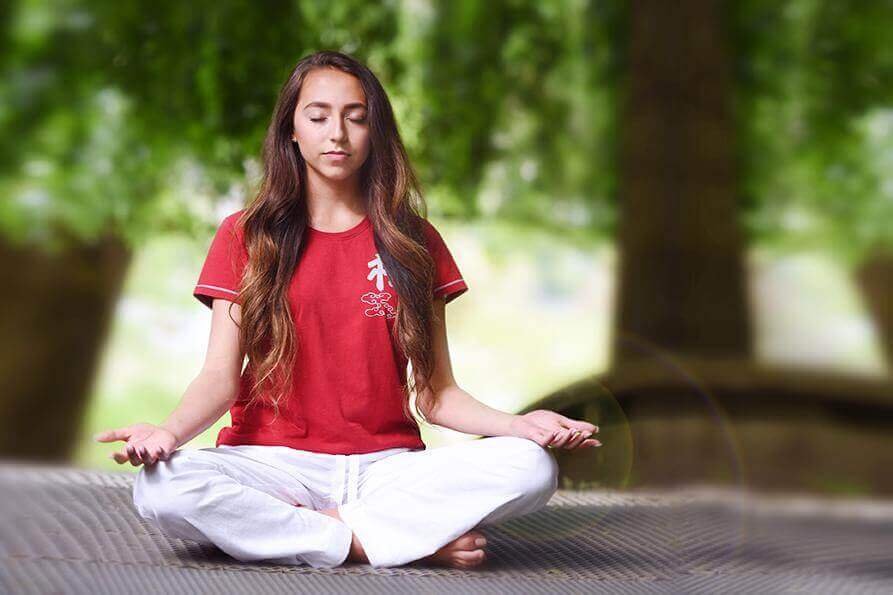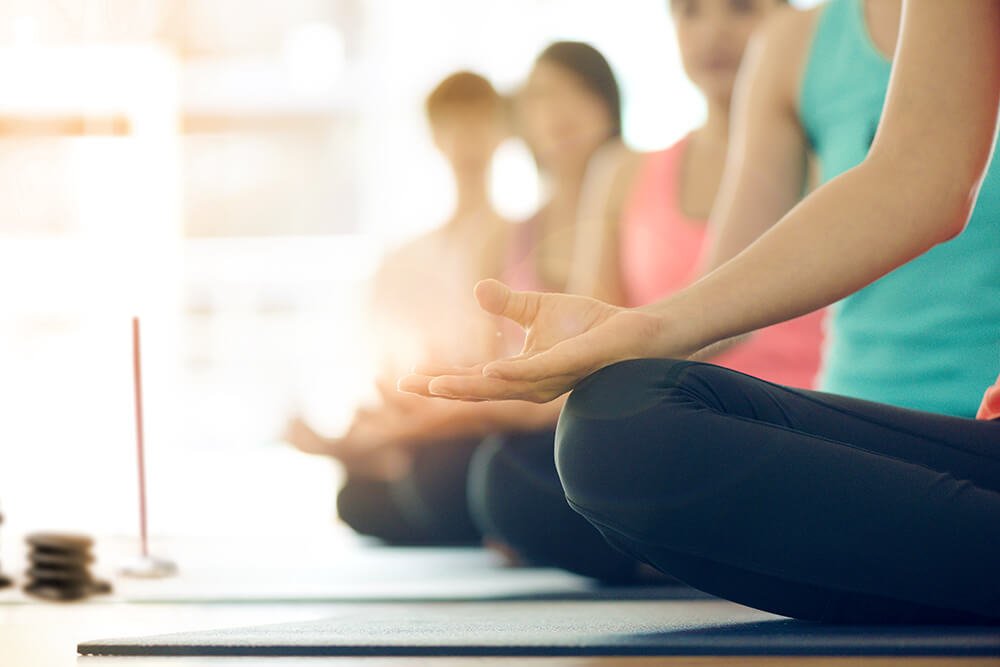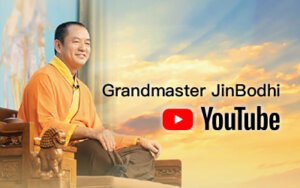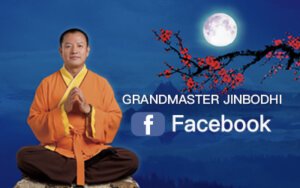
Sitting meditation is a popular way to cultivate the body and mind. It is simple to learn and easy to practice. Sitting meditation helps practitioners maintain peace of mind and clear thoughts, awaken potential and improve the quality of rest. For years, studies have shown that when we are relaxed, our brain releases more dopamine, which makes us feel not only happy and satisfied, but also more rational in dealing with stress and negative emotions. Which sitting position should beginners learn first? What are the things they should take note of when practicing? Read on and find out more.
Learn the Three Most Common Positions
The best place to meditate is a space which is quiet and airy, with moderate temperature and not too bright. Practitioners are advised to sit on a meditation cushion to lift their hips, which helps if they are going to sit-meditate for a long period of time. Beginners should choose a sitting position which they find most comfortable according to their own physical conditions. The three most common sitting meditation positions are as follows:
Sitting Meditation Position 1: Cross-Legged Position
When sitting cross-legged, both feet should be tucked in, one underneath the other. This is the most common sitting position for beginners.
Sitting Meditation Position 2: Half-Lotus Position
In this position, one foot should be placed under one of your thighs, and the other foot should be placed on top of the other thigh. This position is more difficult than the cross-legged position.
Sitting Meditation Position 3: Full-Lotus Position
In this position, both feet should be placed on top of the other thigh. This position requires a higher level of flexibility, but it helps practitioners keep a lower center of gravity to stay in position for longer. It is considered the ideal way to practice sitting meditation.
If you’re a beginner and unfamiliar with sitting meditation postures, or physically weak, you may sit on a chair to practice sitting meditation. You may take the cross-legged position later when your physical conditions permit.
Three Things To Take Note Of For Beginners When Practicing Sitting Meditation:

1. Hand Positions And Placement
The most common hand position is having both palms facing up and placed on top of each knee. Practitioners may also place their hands in a stacked position (palms facing up) and place them close to their abdomen with the right hand stacked on the left hand and both thumbs touching lightly.
2. Random Thoughts When Meditating
Beginners tend to force themselves to concentrate when meditating. They may be able to have a clear mind for a moment and feel drowsy and sleepy not long after. This happens because beginners have not learned how to relax their minds. It is normal to have random thoughts when learning meditation. Instead of trying to erase these random thoughts by force, it is better to open our minds to random thoughts so that we do not distract ourselves with attempts to erase them.
3. Do’s And Don’ts When Meditating
For the beginners to relax their body and remain focused and calm, it’s important to avoid being distracted. To that aim, never meditate when emotions are not stable or when your stomach is full or hungry; it is better not to overeat before meditating, and rest for an hour after a meal before beginning meditation. When meditating, it is best to wear loose, comfortable clothing made of pure, natural fabrics. In addition, it is recommended to avoid meditating during times of extreme weather such as thunderstorms or typhoons.
What Are The Possible Sensations That Occur When Meditating?
It is common for meditation beginners to experience several common sensations. Some sensations occur naturally during meditation, and some may be caused by external factors. Here are the five most common sensations when meditating:
Meditation Sensation 1: Feeling Hot And Perspiring
When meditating, practitioners enter a relaxed state called the state of purity. In this state, they can easily connect to Universal energy and absorb such energy, which makes their body temperature rise slightly leading to light sweating.
Meditation Sensation 2: Feeling Sore, Itchy, Tingly
The energy absorbed during meditation unblocks meridians and acupuncture points; that makes practitioners feel sensations such as aching, itching, tingling, swelling, etc. When experiencing these reactions, practitioners are advised not to scratch or pat where these sensations occur, as these feelings will disappear shortly.
Meditation Sensation 3: Yawning, Shedding Tears, Having A Runny Nose
While meditating, practitioners may involuntarily yawn, shed tears, or have a runny nose. Those reactions are common in meditation practices; that indicates the body is getting rid of negative emotions and sickness in the form of tears and mucus.
Meditation Sensation 4: Dizziness, Stuffiness, Lethargy
These signs are common if the meditation venue has poor ventilation or a warm room temperature. Keep the room airy and set a suitable room temperature to create a more comfortable meditation environment.
Meditation Sensation 5:Shaking And Swaying
Proper meditation methods should result in the state of purity. Shaking or swaying the body side to side too much could be due to an improper meditation method. In this circumstance, the practitioner is advised to open their eyes, calm down and refocus; the best course of action is to seek professional meditation advice.
A Meditation Practice For Beginners: The Meditation Of Purity By Grandmaster Jinbodhi
When meditating, beginners may experience feeling hot and sweating, or feel soreness, numbness, swelling, and itching; thus, they may worry they have done something wrong. These distracting thoughts can hinder a practitioner from entering the meditative state. As such, it’s suggested that beginners receive guidance from an accomplished practitioner; wise instruction will help them calm down quickly during meditation and foster their growth on the meditation path.
The Meditation of Purity is a meditation practice created by Grandmaster JinBodhi. In this practice, the method “One thought replaces all distracting thoughts” is used to guide practitioners into the state of purity; the soothing music and Grandmaster’s magnetic voice greatly help practitioners clear their thoughts to enter a pure and peaceful meditative realm. Through visualizing as guided by Grandmaster JinBodhi’s instruction, practitioners will be able to quickly calm down to enter the meditative state, thereby improving their health and awakening their boundless potential.
Guided Meditation | The Best Choice For Beginners
Bodhi Meditation, founded by Grandmaster JinBodhi, is an organization that strives to promote meditation practices and benefit all meditation lovers around the world. Today, Bodhi Meditation has set up meditation centers in many countries worldwide to fulfill its mission of providing ideal practice venues that teach different meditation methods to those who need them.
If you’re interested in meditation, you’re welcome to our centers to find out more about our classes. The Meditation of Purity may also be learned by following our online classes. By listening and practicing along with Grandmaster JinBodhi’s guided visualization, you shall learn and master The Meditation of Purity, and you’ll feel the wonder of being filled with auspicious energy from sitting meditation.
Read More:
Learn Sitting Meditation the Easy Way: Tap Into the Benefits With Professional Guidance

